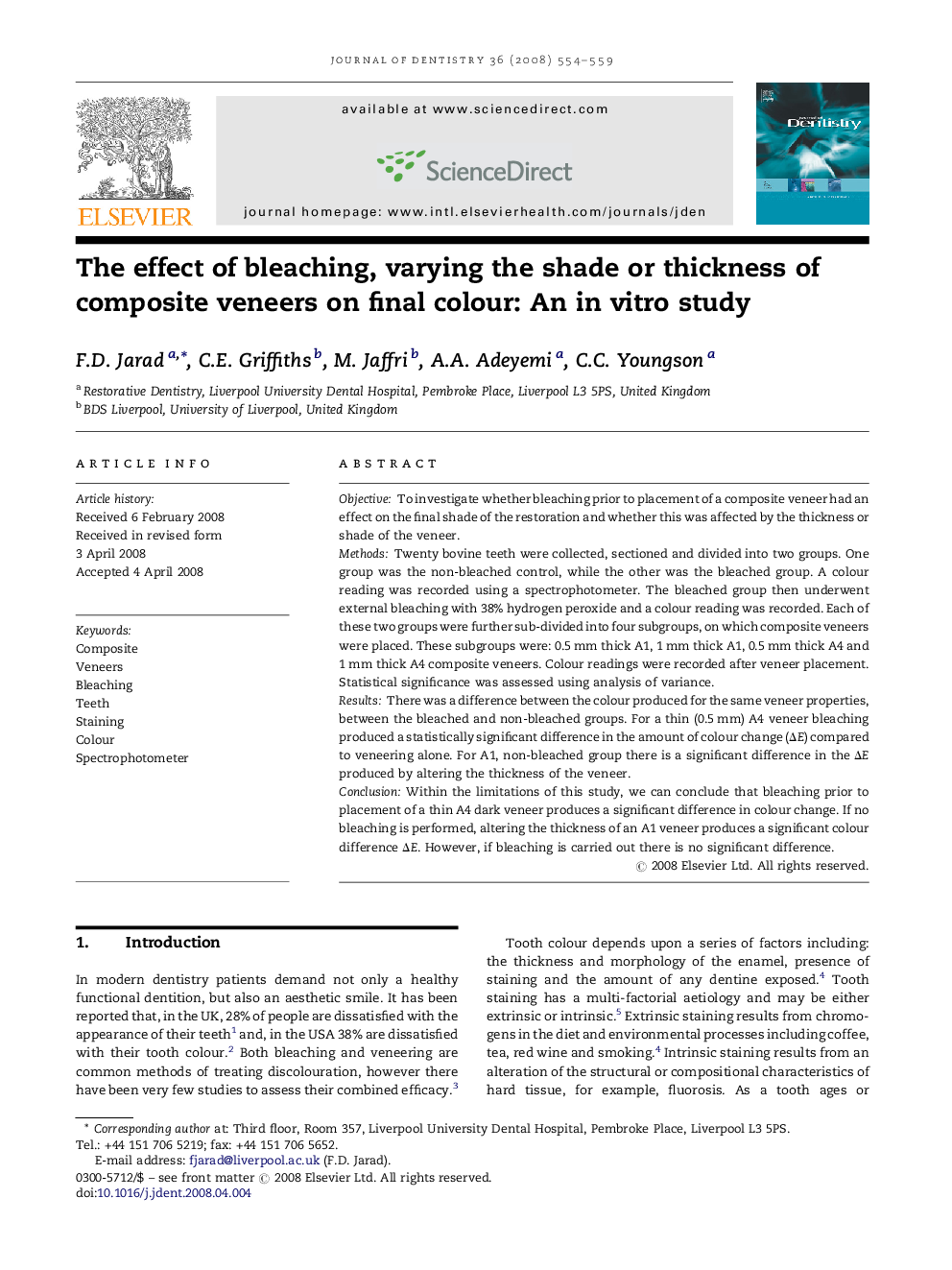| Article ID | Journal | Published Year | Pages | File Type |
|---|---|---|---|---|
| 3145896 | Journal of Dentistry | 2008 | 6 Pages |
ObjectiveTo investigate whether bleaching prior to placement of a composite veneer had an effect on the final shade of the restoration and whether this was affected by the thickness or shade of the veneer.MethodsTwenty bovine teeth were collected, sectioned and divided into two groups. One group was the non-bleached control, while the other was the bleached group. A colour reading was recorded using a spectrophotometer. The bleached group then underwent external bleaching with 38% hydrogen peroxide and a colour reading was recorded. Each of these two groups were further sub-divided into four subgroups, on which composite veneers were placed. These subgroups were: 0.5 mm thick A1, 1 mm thick A1, 0.5 mm thick A4 and 1 mm thick A4 composite veneers. Colour readings were recorded after veneer placement. Statistical significance was assessed using analysis of variance.ResultsThere was a difference between the colour produced for the same veneer properties, between the bleached and non-bleached groups. For a thin (0.5 mm) A4 veneer bleaching produced a statistically significant difference in the amount of colour change (ΔE) compared to veneering alone. For A1, non-bleached group there is a significant difference in the ΔE produced by altering the thickness of the veneer.ConclusionWithin the limitations of this study, we can conclude that bleaching prior to placement of a thin A4 dark veneer produces a significant difference in colour change. If no bleaching is performed, altering the thickness of an A1 veneer produces a significant colour difference ΔE. However, if bleaching is carried out there is no significant difference.
